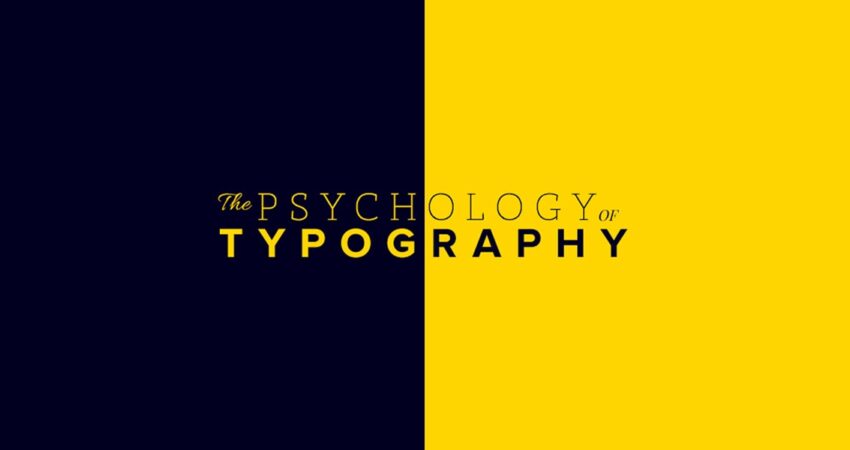
In today’s competitive business world, creating a strong brand identity is significant for success. One highly effective way to achieve this is through typographic logo design. The art of crafting logos using typography requires a deep understanding of both design principles and the psychology behind font choices. By strategically leveraging typographic design, businesses can build brand recognition and make a lasting impression on their target audience. In this article, we will explore the art and psychology of typographic logo design and discover how it can be used to create impactful visual identities.
How Typography Can Enhance Your Brand Identity
Typography is more than just selecting a font for your logo. It is a powerful tool to enhance your brand identity and communicate your message effectively. The right typography can convey the personality, values, and professionalism of your brand. From bold and modern to elegant and timeless, different typefaces evoke distinct emotions and perceptions. By carefully selecting and customizing typography, you can create a visual representation that resonates with your audience and sets your brand apart from the competition.
When designing a typographic logo, it’s essential to consider readability and scalability. The logo must be legible across various mediums and sizes, ensuring consistent recognition across different platforms and applications. Additionally, typography should be harmoniously integrated with other design elements, such as colors and graphics, to create a cohesive and visually appealing logo.
The Psychology Behind Font Choice
Typography plays a significant role in shaping the perception of a brand. Different fonts have distinct personalities and evoke specific emotions. Understanding the psychology behind font choice is vital to creating a typographic logo that resonates with your target audience.
Serif fonts, characterized by their decorative strokes, are often associated with tradition, elegance, and reliability. They can be an excellent choice for brands that want to convey a sense of trustworthiness and longevity. On the other hand, sans-serif fonts, with their clean and modern appearance, are often associated with innovation, simplicity, and forward-thinking. They can be more suitable for brands targeting a younger and more tech-savvy audience.
The choice between serif and sans-serif fonts can significantly impact how your logo is perceived. It’s crucial to align the font style with your brand’s values, target audience, and industry. A well-chosen font can help build credibility and evoke the desired emotional response from your customers.
The Value of Professional Logo Design
While it may be tempting to create your own logo using online tools or generic templates, investing in professional logo design can yield tremendous long-term benefits. Professional designers possess the expertise and creativity to craft a unique and impactful typographic logo that accurately represents your brand.
A professionally designed logo goes beyond aesthetics. It takes into account your brand’s messaging, values, and target audience. Professional designers carefully consider typography, color theory, and composition to create a cohesive and memorable logo that captures the essence of your brand.
Furthermore, a professionally designed logo has the versatility to adapt to various marketing materials and platforms. It can be easily resized, ensuring that your brand remains recognizable across different digital and print mediums. An investment in professional logo design is an investment in the long-term success and recognition of your brand.
Crafting the Perfect Logo for Your Business
Creating a typographic logo that reflects your brand’s unique identity requires a thoughtful and iterative process. Here are some essential steps to consider:
- Define your brand: Before embarking on logo design, it’s crucial to have a clear understanding of your brand’s personality, values, and target audience. This will guide the design decisions and ensure the logo accurately represents your brand.
- Research and inspiration: Gather inspiration by exploring different typographic logos in your industry and beyond. Analyze their designs, font choices, and the emotions they evoke. This research will help you identify trends and establish a foundation for your logo design.
- Sketching and conceptualization: Begin the design process by sketching various logo concepts. Experiment with different typographic treatments and layouts. This stage allows for exploration and creativity, enabling you to refine and iterate on your ideas.
- Typography selection: Once you have a solid concept, focus on selecting typography that aligns with your brand’s personality and target audience. Consider the emotions you want to evoke and the perception you want to create. Test different fonts and combinations to find the perfect match.
- Customization and refinement: After selecting the typography, it’s time to customize and refine the logo design. Pay attention to spacing, balance, and legibility. You may need to adjust letterforms or kerning to achieve the desired aesthetic and readability.
- Color and additional elements: While typographic logos often rely solely on typography, color can play a crucial role in enhancing the design. Select colors that complement the typography and resonate with your brand. If necessary, incorporate additional design elements, such as symbols or images, to further reinforce your brand’s message.
- Feedback and iteration: Seek feedback from stakeholders, colleagues, or professionals in the design industry. Gather their insights and make adjustments accordingly. Iteration is a vital part of the design process and ensures that the final logo is truly representative of your brand.
Exploring the Intersection of Art and Psychology
Typographic logo design is a discipline that combines art and psychology. It requires a deep understanding of design principles, typography, and the emotional impact of visual elements. By exploring the intersection of art and psychology, designers can create logos that communicate on both a visual and emotional level.
Artistic techniques, such as hierarchy, contrast, and balance, are employed to guide the viewer’s eye and create a memorable composition. The careful selection of typography and the emotions it evokes play a crucial role in shaping the overall impact of the logo. When art and psychology converge, typographic logo design becomes a powerful means of communication.
Leveraging Typographic Design to Build Brand Recognition
A well-designed typographic logo can become an iconic symbol that is instantly recognizable to your target audience. Consistency and repetition are key to building brand recognition. Ensure that your logo is consistently used across various touchpoints, such as websites, social media profiles, business cards, and product packaging.
By leveraging the design principles of simplicity, memorability, and versatility, you can create a typographic logo that stands the test of time. The combination of well-chosen typography and a visually appealing design will help your brand leave a lasting impression on your audience.
Capturing Emotions with Fonts and Colors
Fonts and colors have the power to evoke specific emotions and associations. When designing a typographic logo, it’s essential to consider the emotional response you want to create in your audience. Different font styles and colors can convey different moods and messages.
For example, bold and uppercase lettering can evoke a sense of strength and authority. Script fonts can imbue a sense of elegance and sophistication. Vibrant colors can communicate energy and excitement, while muted tones can convey a more calm and sophisticated mood. By carefully selecting typography and colors that align with your brand’s personality and message, you can effectively capture the desired emotions and establish a strong connection with your target audience.
Crafting an Impactful Visual Identity with Typography
Typography is a fundamental element of a brand’s visual identity. It’s not just about selecting a font; it’s about choosing typography that speaks to your brand’s unique personality and resonates with your target audience. Consistent typographic design creates a cohesive and impactful visual identity that sets your brand apart.
When designing your visual identity, consider the following aspects:
- Font selection: Choose fonts that align with your brand’s personality and the perception you want to create. Consider legibility, scalability, and the emotions the font evokes.
- Hierarchy and spacing: Pay attention to the visual hierarchy of your typography. Use spacing and layout to guide the viewer’s eye and create balance within the design.
- Adaptability: Create a typographic design that is adaptable to different mediums and sizes. This allows for consistent brand representation across various applications.
By considering these elements, you can craft a visual identity that effectively communicates your brand’s message and resonates with your target audience.
Designing Logos with a Purpose
Every logo should have a purpose and align with the broader goals of your brand. Consider the following factors when designing a typographic logo:
- Target audience: Understand your target audience and design a logo that speaks to their preferences and desires. Research their demographics, interests, and buying behavior to inform your design decisions.
- Brand positioning: Determine your brand’s unique value proposition and ensure your logo accurately represents it. A well-crafted logo should communicate what sets your brand apart from competitors.
- Brand message: Define the core message you want to convey through your logo. Whether it’s professionalism, innovation, or trust, your logo should encapsulate your brand’s key attributes.
- Longevity: Aim for a timeless design that can withstand the test of time. Avoid following design trends that may quickly become outdated. A logo with staying power ensures long-term recognition and brand loyalty.
- Memorability: Create a logo that is distinctive and easy to remember. A memorable logo increases brand recall and facilitates word-of-mouth marketing.
By designing a typographic logo with purpose, you can create a visual representation of your brand that resonates with your target audience and supports your overall business objectives.
How to Make a Lasting Impression with Typographic Logo Design
Creating a typographic logo that makes a lasting impression requires a combination of thoughtful design choices and strategic implementation. Follow these guidelines to ensure your logo stands out:
- Simplicity: Keep the design clean and uncluttered. Avoid complexity and excessive ornamentation. A simple and streamlined logo is easier to remember and recognize.
- Uniqueness: Aim for a logo that is distinctive and different from competitors. A unique logo helps your brand stand out in a crowded market.
- Relevance: Ensure your logo is relevant to your brand and industry. It should accurately represent your business and resonate with your target audience.
- Consistency: Use your logo consistently across all brand touchpoints. This includes websites, social media profiles, marketing materials, and packaging. Consistency builds brand recognition and strengthens your visual identity.
- Color psychology: Choose colors that align with your brand’s personality and evoke the desired emotions. Different colors have distinct psychological associations and can influence how your logo is perceived.
- Feedback and testing: Seek feedback from peers, professionals, and members of the target audience. A fresh perspective can help identify areas for improvement and ensure the logo resonates with your intended audience.
- Evolution over time: While it’s important to create a logo with longevity, don’t be afraid to evolve it over time. As your brand grows and adapts, your logo should reflect these changes. However, ensure that any updates maintain consistency and retain the essence of your original logo.
By following these principles, you can design a typographic logo that leaves a lasting impression on your audience and contributes to the success and recognition of your brand.
FAQ’s
Conclusion
Typographic logo design is an art form that combines creativity, psychology, and strategic thinking. By leveraging the power of typography and understanding the emotions and associations fonts and colors can evoke, businesses can create impactful visual identities that make a lasting impression. Crafting the perfect logo requires a thoughtful and iterative process as well as an understanding of your brand’s personality, target audience, and industry. By utilizing professional logo design services and investing in a unique and well-crafted logo, businesses can set themselves apart from the competition and build strong brand recognition. Remember, a typographic logo is not just a design; it’s a representation of your brand’s values and a way to connect with your audience on a deep and emotional level.







